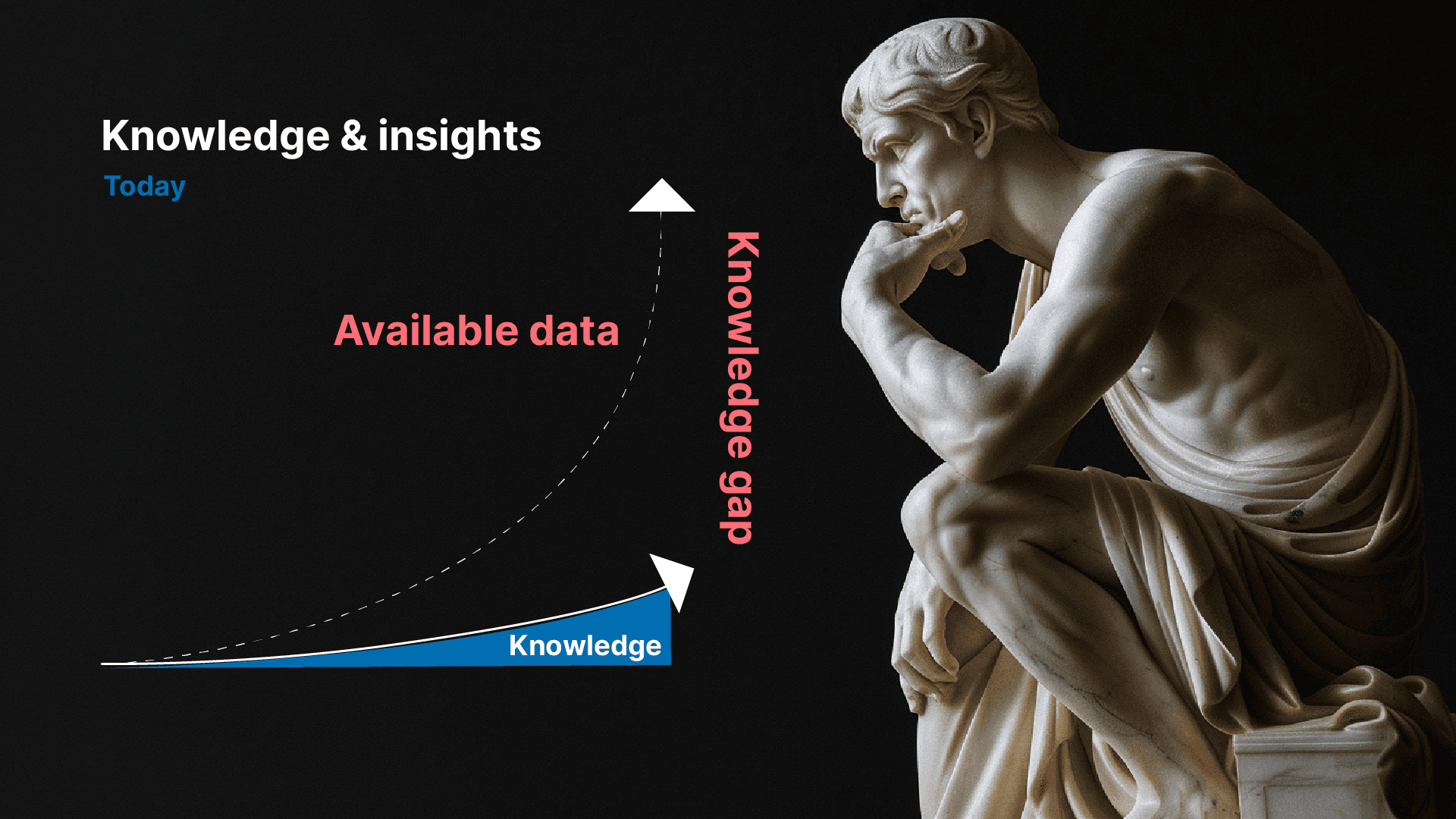In a world where data is now essential, many companies are sitting on a goldmine without fully capitalizing on it. There is a growing realization that to truly benefit from this resource, data management must extend far beyond the top floor conference rooms and become an integral part of every employee’s daily work. But what does the landscape look like today, and what are the main challenges of current data management?
Current challenges
Limited Access to Data
Many companies store their valuable data in isolated systems that are only accessible to a few key people. This not only creates a barrier to flow but also a sense of segregation where the majority of employees feel left out of the important decision-making process. To give an example:
In the industrial sector, it is common for production data, maintenance logs and quality control reports to be stored in separate, specialized systems. For example, a manufacturing facility may have real-time production data that is critical to operational decisions, but this data is only available to factory managers or IT staff. This prevents operators on the floor from quickly adjusting processes based on the latest data trends, limiting the efficiency and flexibility of production.
Knowledge gaps
Closely related to access is the problem of knowledge gaps. Without basic data literacy and understanding, employees can struggle to interpret and apply data even when they are given access to it. There needs to be a cultural change that focuses on education and skills development. For example, if an operator does not understand how to interpret data from a new sensor installed on a production line, they may miss early warning signs of equipment failure or deviations in product quality. This knowledge gap can lead to costly downtime and quality issues that could have been avoided with better data literacy.
Corporate Culture and Organizational Structures
In addition, corporate culture and organizational structures stand in the way of wider data use. A culture that does not value openness, sharing and collaboration becomes a significant barrier to the democratization of data. But don’t despair – there are multiple solutions to this, so let’s take a closer look at how you can address these challenges.
Accessibility at its best
Training and skills development
To overcome the challenges of data management, companies must prioritize training and skills development. It is important to focus not only on developing technical skills but also on building a data-driven culture. Every employee should understand the value of data and how it can be applied to improve both workflows and decision-making processes. This means investing heavily in training initiatives that ensure all employees not only become comfortable using data, but also see how it can directly impact and improve their daily tasks.
Investing in the right tools
An important part of addressing the challenges of data management is choosing the right platforms and tools that are easily accessible and understandable to everyone, regardless of technical skill. It is crucial to use modern data analysis tools that have not only user-friendly interfaces but also advanced visualization features. These tools enable all employees to easily understand and apply data, contributing to more efficient workflows and better decision-making across the organization.
Creating a culture of transparency
To fully integrate data into an organization’s DNA, it is necessary to shift to a culture of transparency and openness around data. It is important to actively encourage sharing and collaboration around data to foster innovation and insight. By creating an environment where all employees feel comfortable sharing and collaborating on data, new insights and innovations can emerge from unexpected directions, strengthening the organization’s ability to leverage its data resources effectively.
Companies to emulate and real-life examples
Companies like Google and Netflix have come a long way in democratizing data as a result of their transparency and accessibility strategies. Their success can be illustrated by several specific initiatives:
Open Data Policy:
Google: Google has created internal platforms such as Google BigQuery, which gives employees access to huge amounts of data for analysis without the need for advanced technical skills. These platforms are integrated with other Google tools, facilitating collaboration and data sharing across departments.
Netflix: Netflix applies a platform-oriented culture where all employees have access to tools to explore and use data. Their decision-making processes are highly data-driven, supported by their extensive use of real-time data to understand user behavior and improve the customer experience.
Training programs:
Google: Google invests heavily in training programs such as Data Engineering on Google Cloud Platform, giving their employees skills in handling large data sets and complex data analysis tools. This knowledge is available to a broad group of employees, fostering a deeper understanding and proficiency in data manipulation and analysis across the company.
Netflix: Netflix has developed extensive internal courses in data analytics and machine learning, accessible to everyone from technicians to marketers. This strengthens their culture of data-driven decision-making by equipping employees with the tools and knowledge needed to analyze and act on insights from data.
Through these and other strategies, Google and Netflix have not only created an environment where data is available and usable to everyone, but also a culture where data-driven insights are fundamental to innovation and decision-making. This demonstrates their ability to transform data into real competitive advantage and the drive for continuous improvement and creativity within their organizations.
Summary
The challenges of current data management are many, but so are the opportunities that open up when we move beyond the C-level and integrate data management into every aspect of our business. Through training, the right tools and a culture of transparency, we can create an environment where every employee has the power to draw insights and make decisions based on data. It’s time to break down the barriers and let information flow freely – for a more insightful and efficient working life.
If you want to know more – feel free to contact us!






